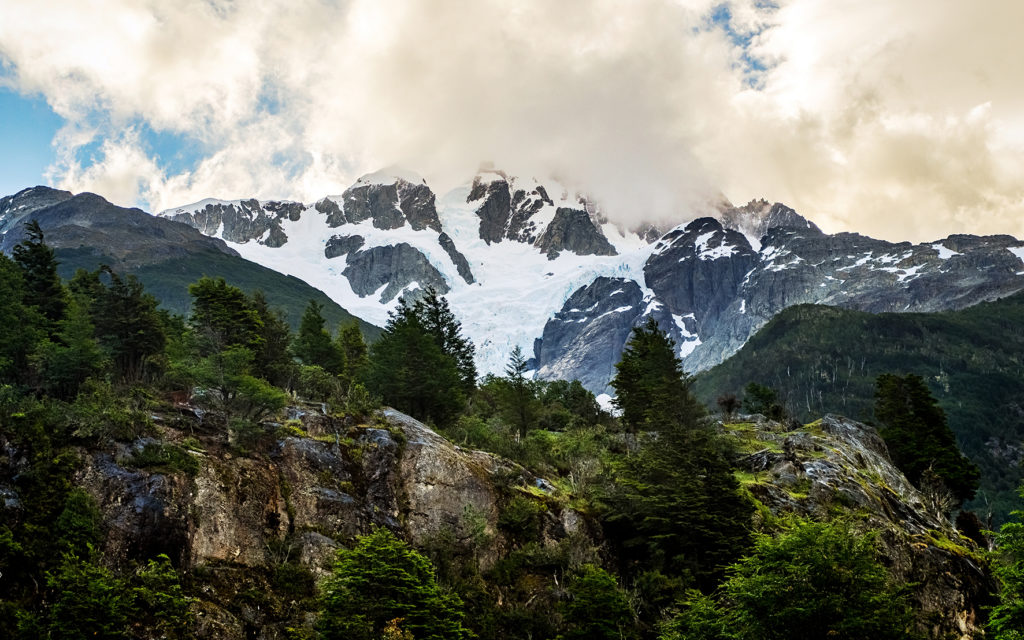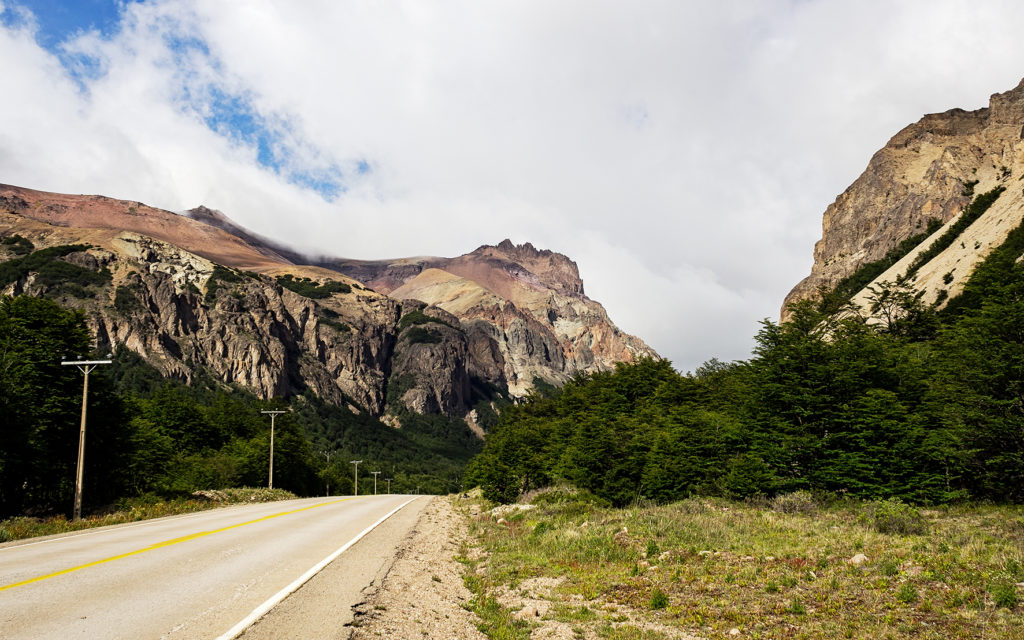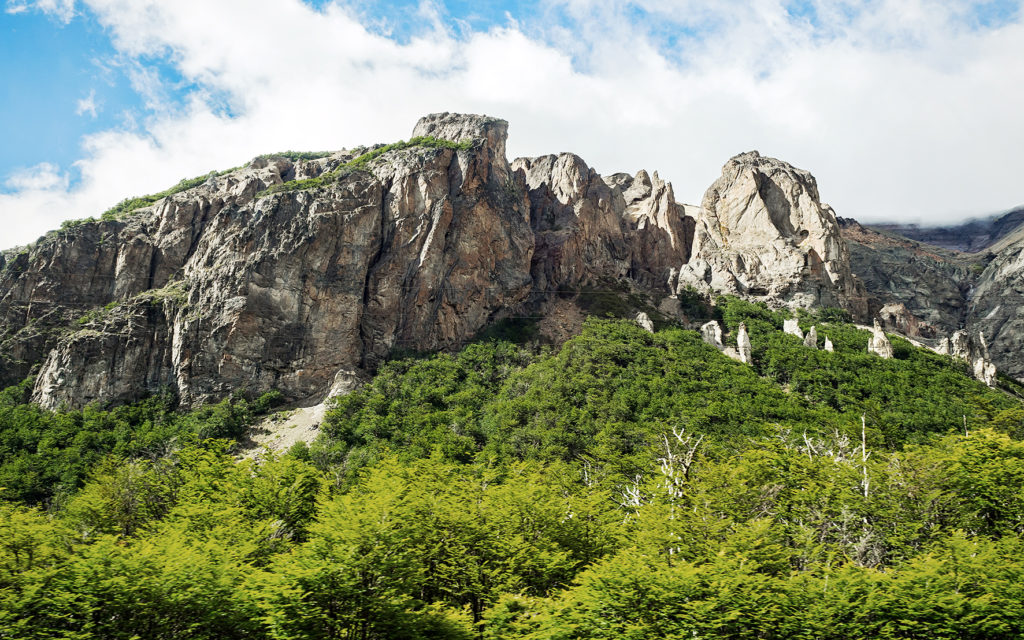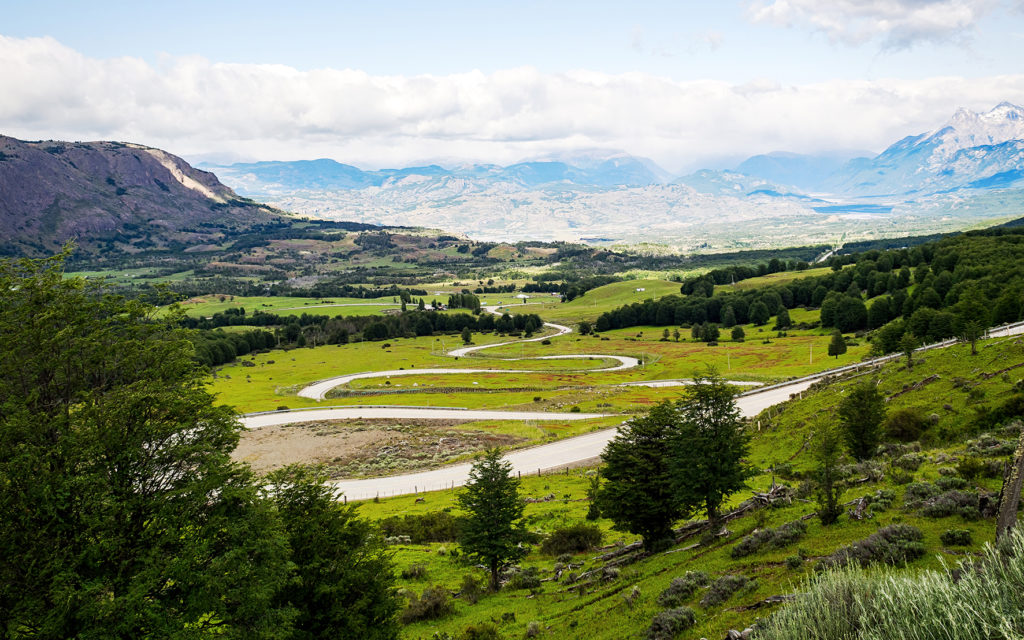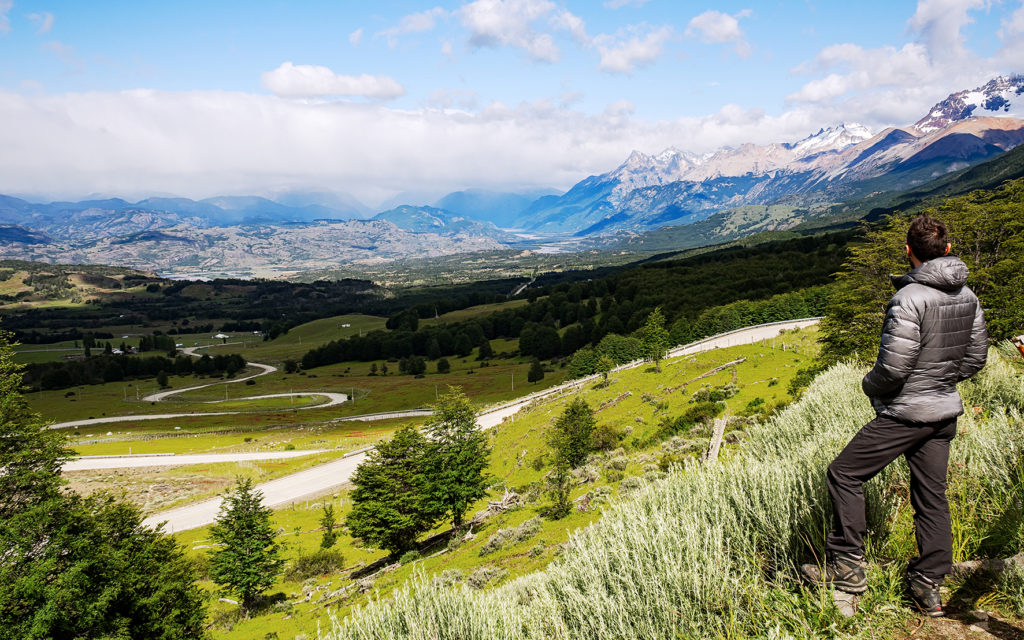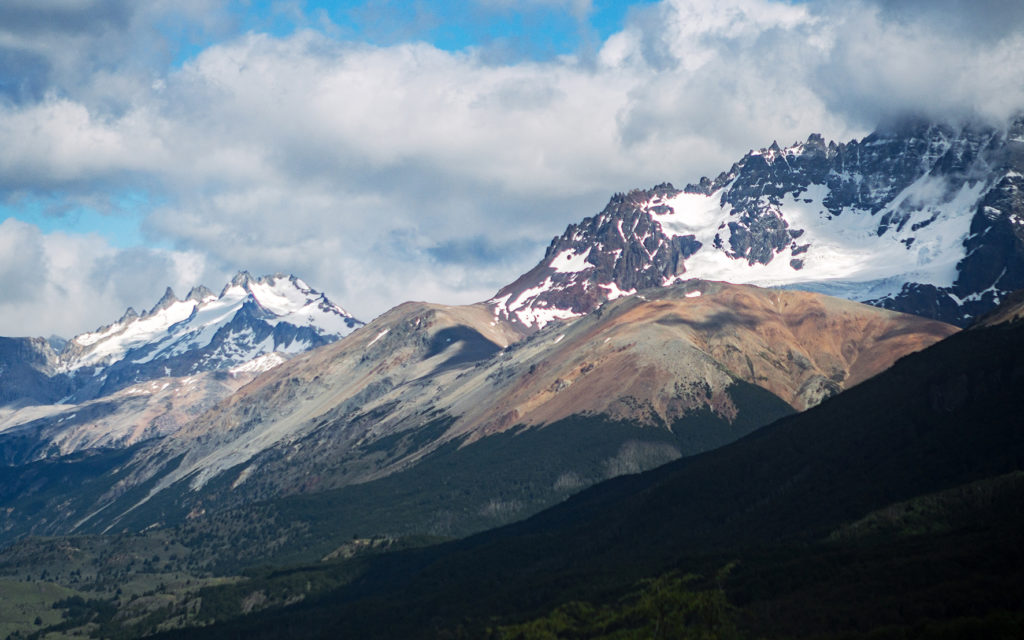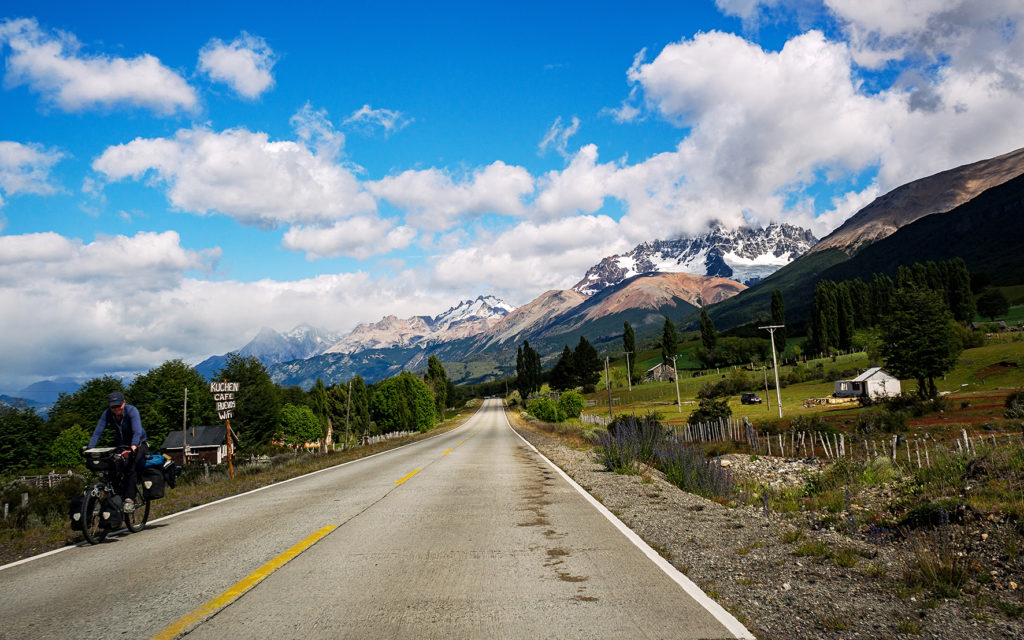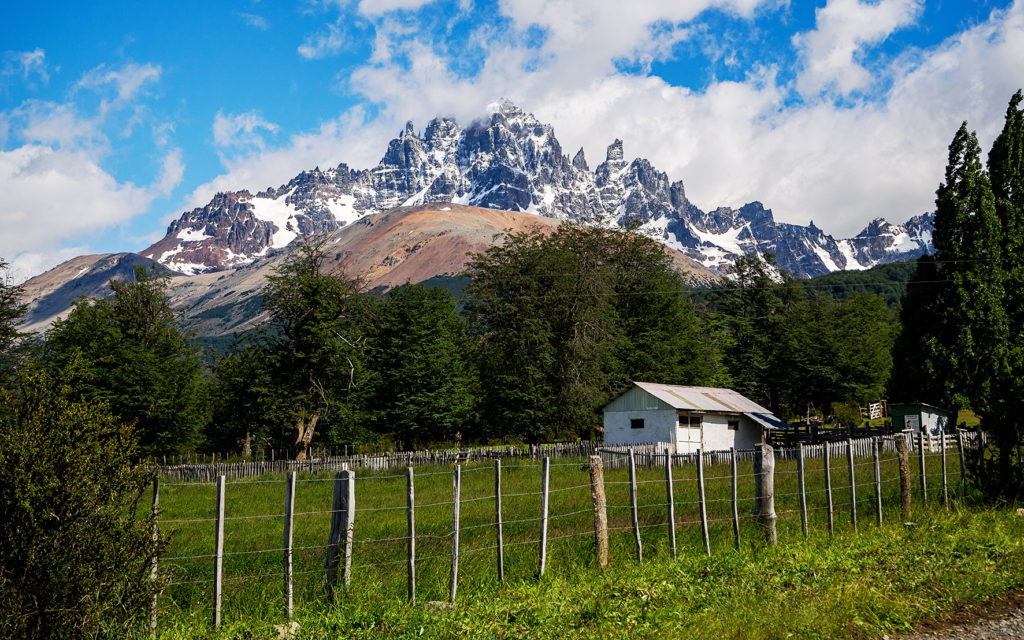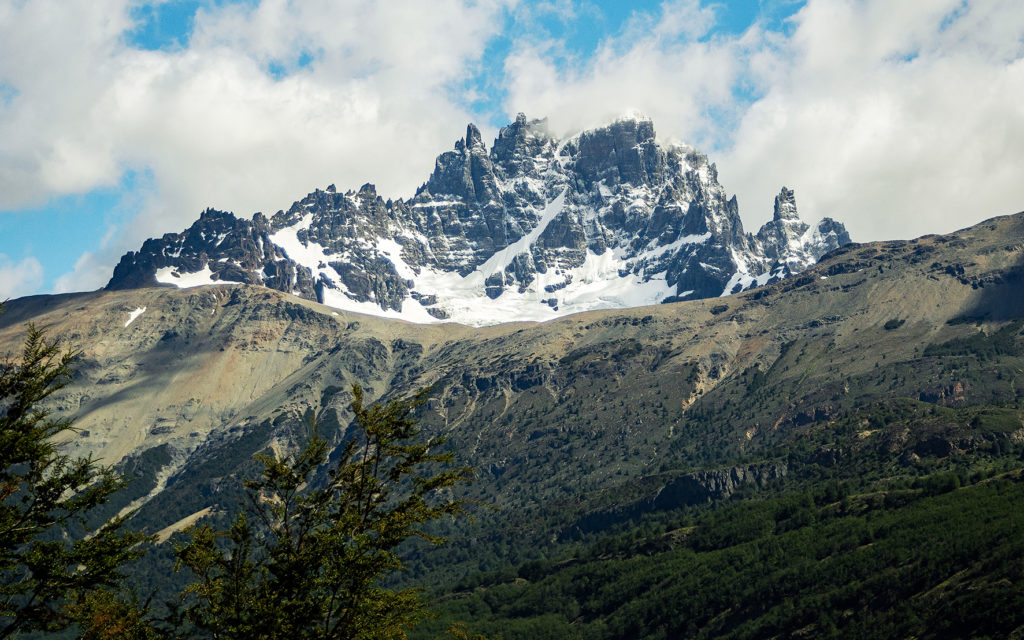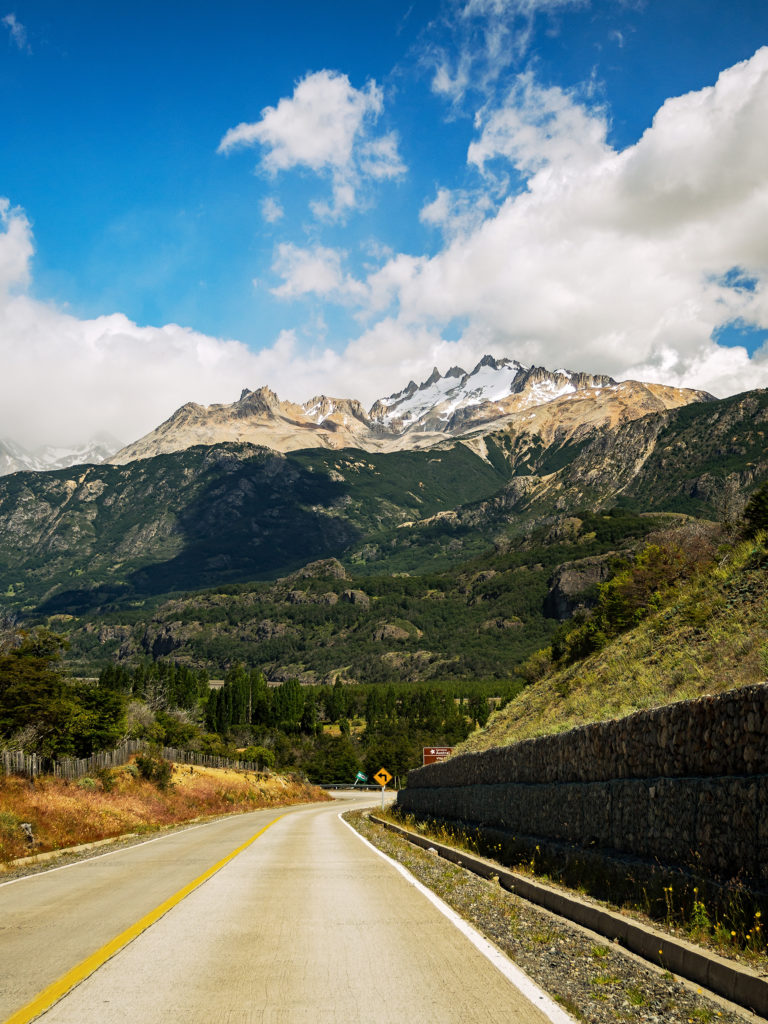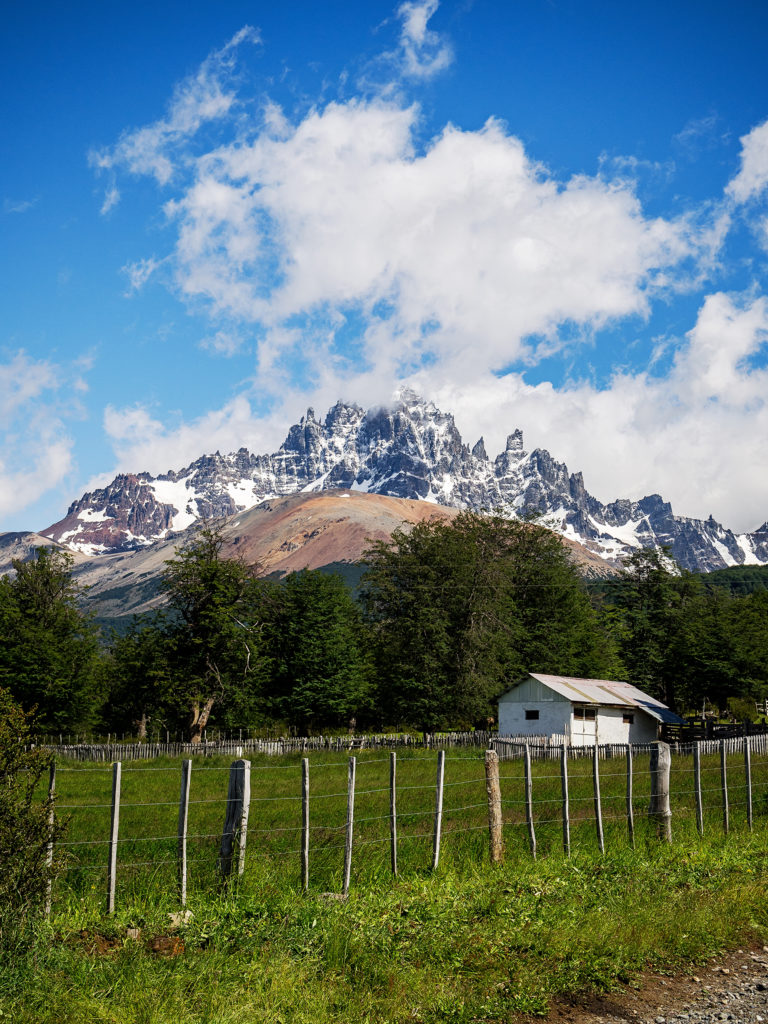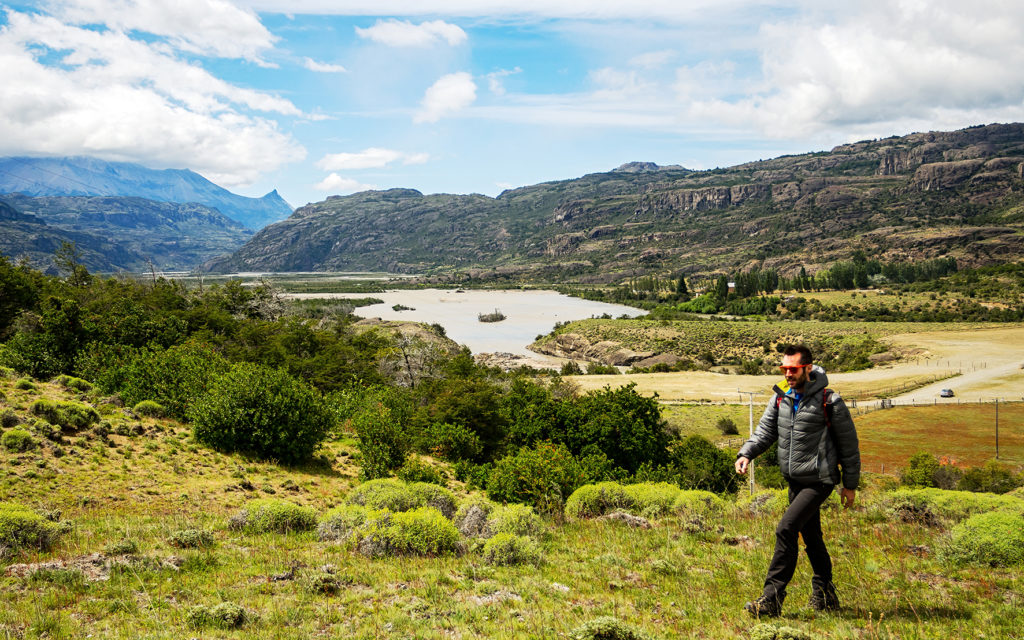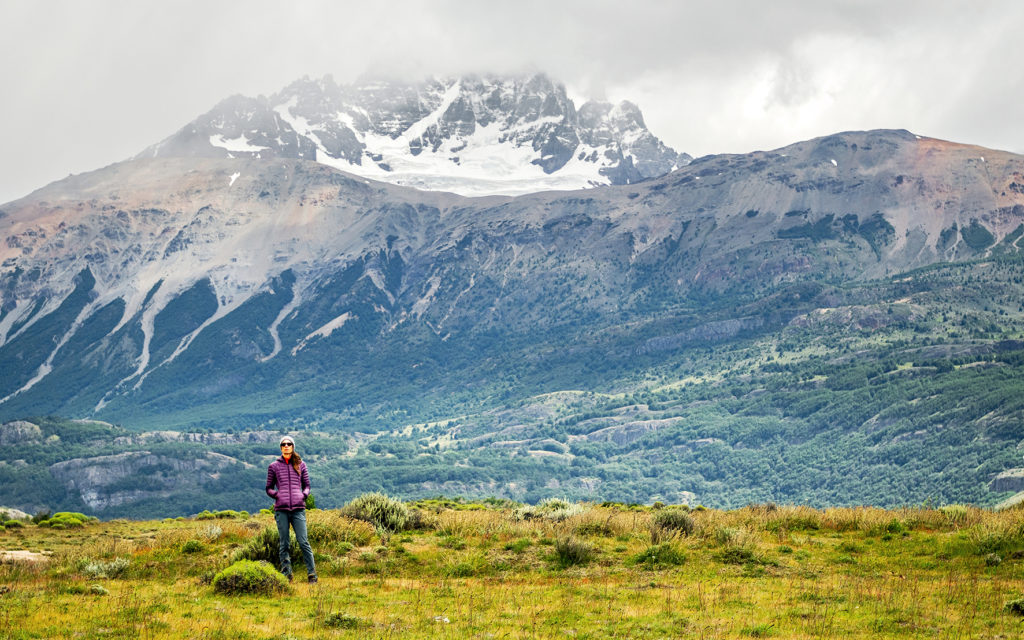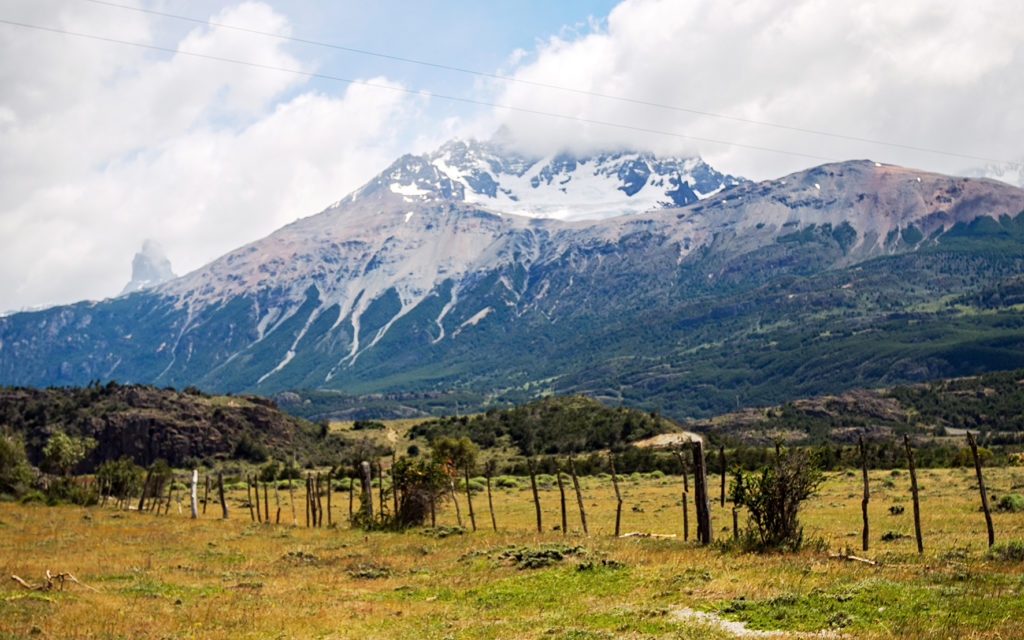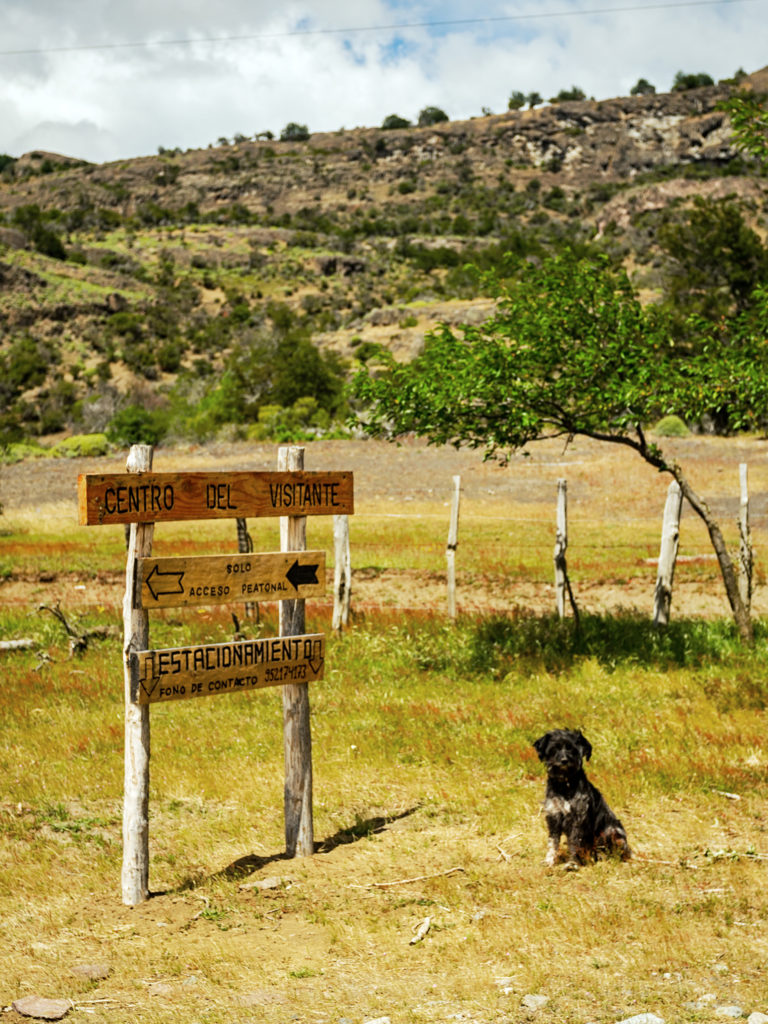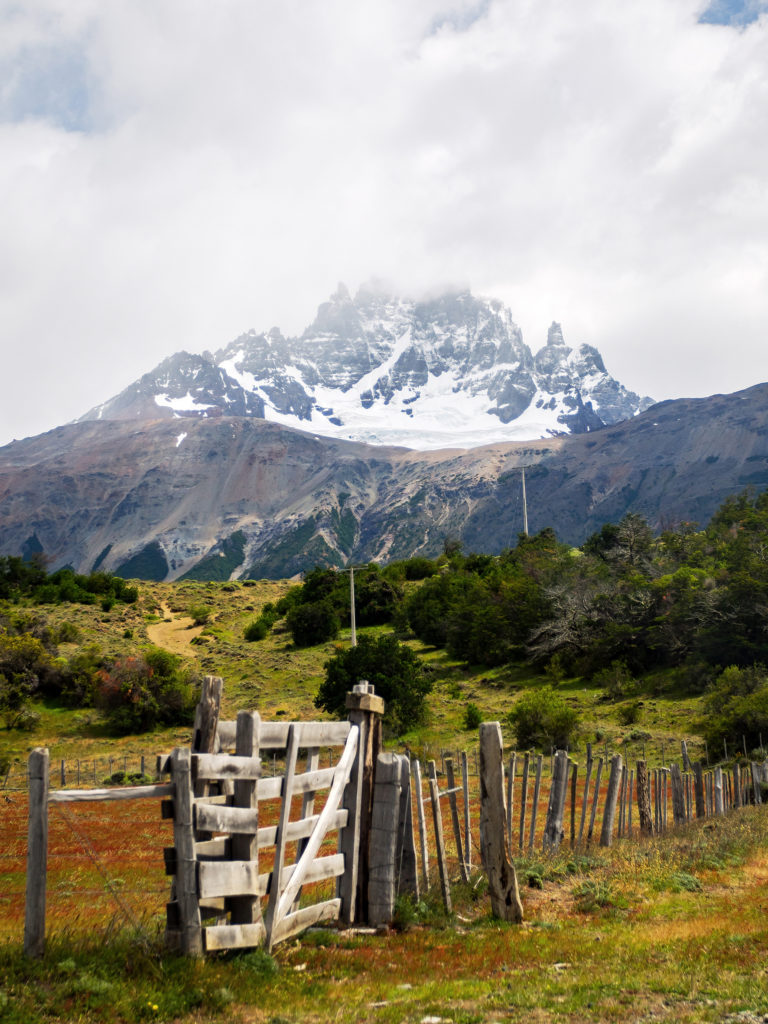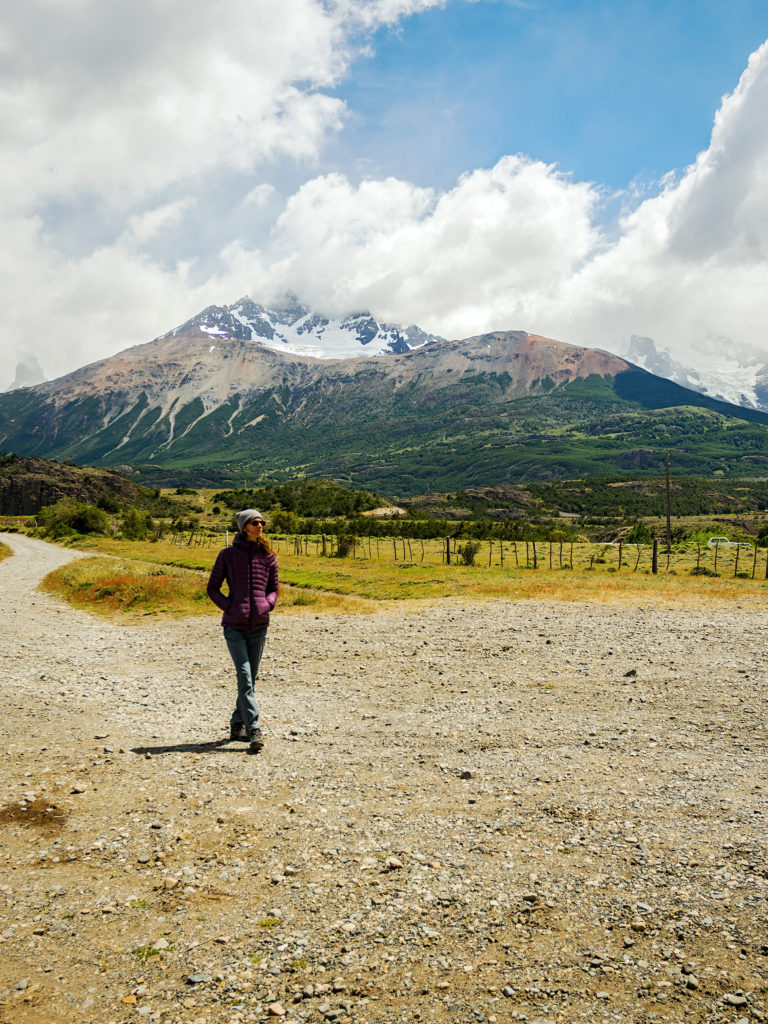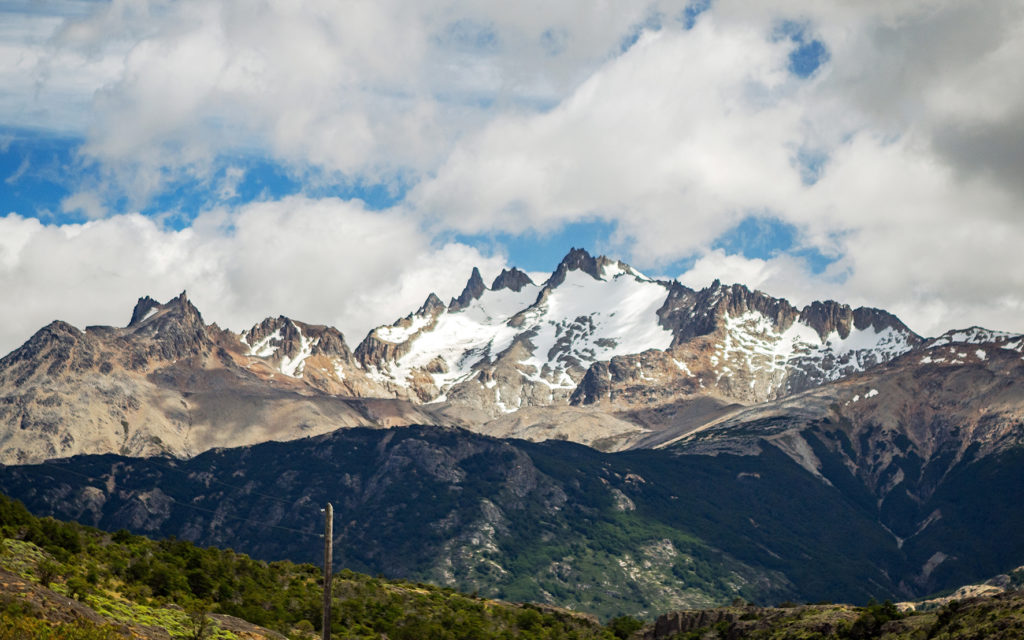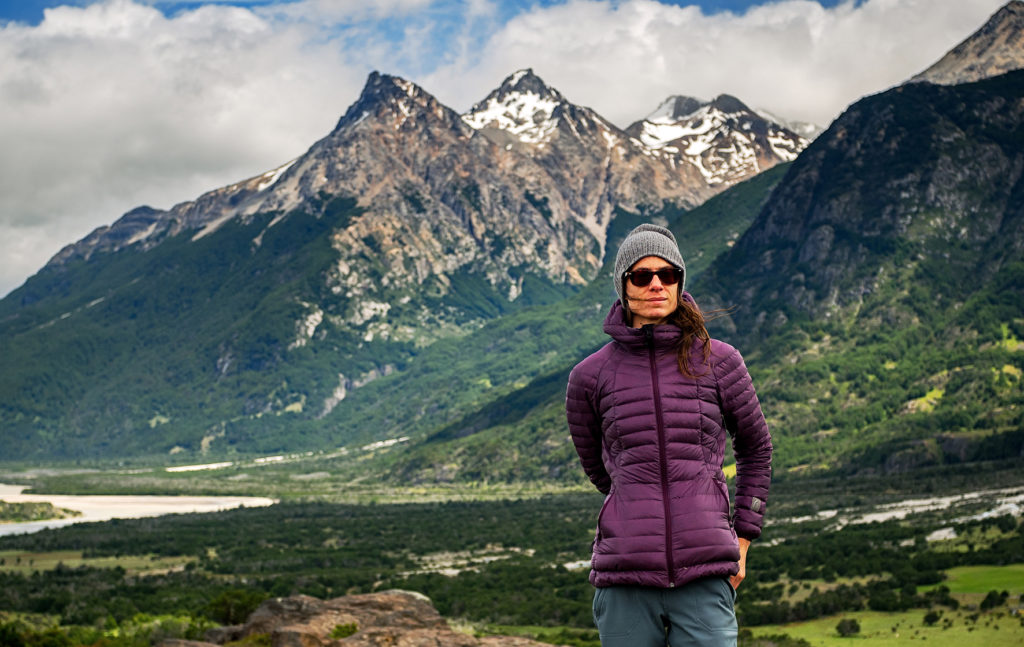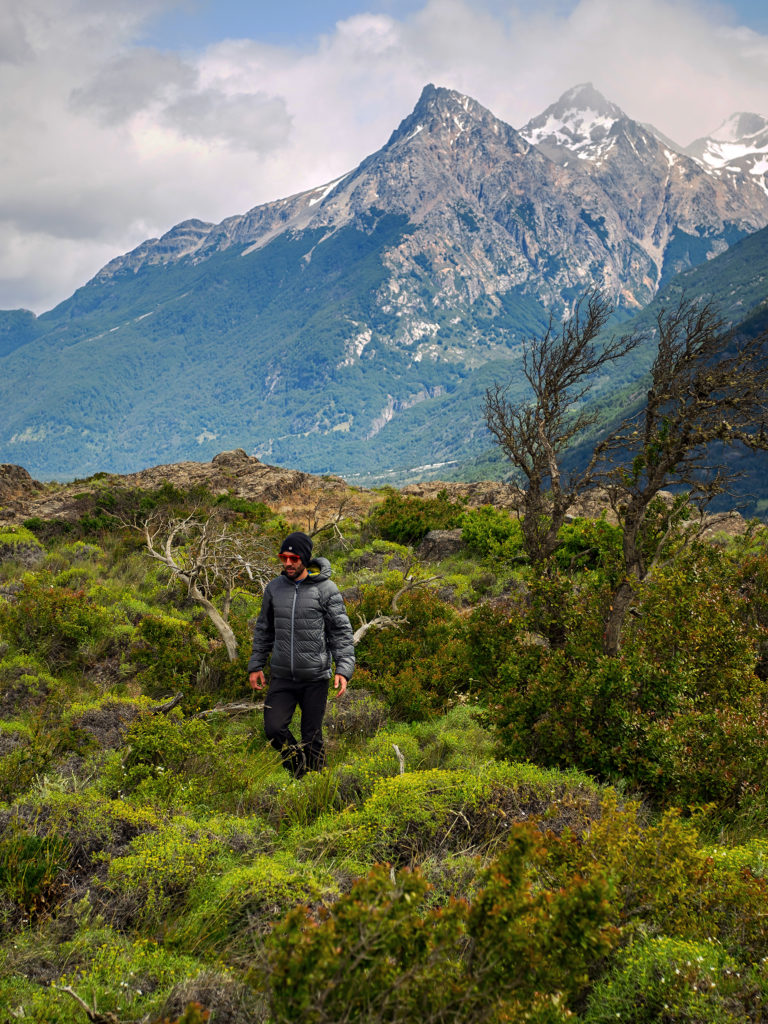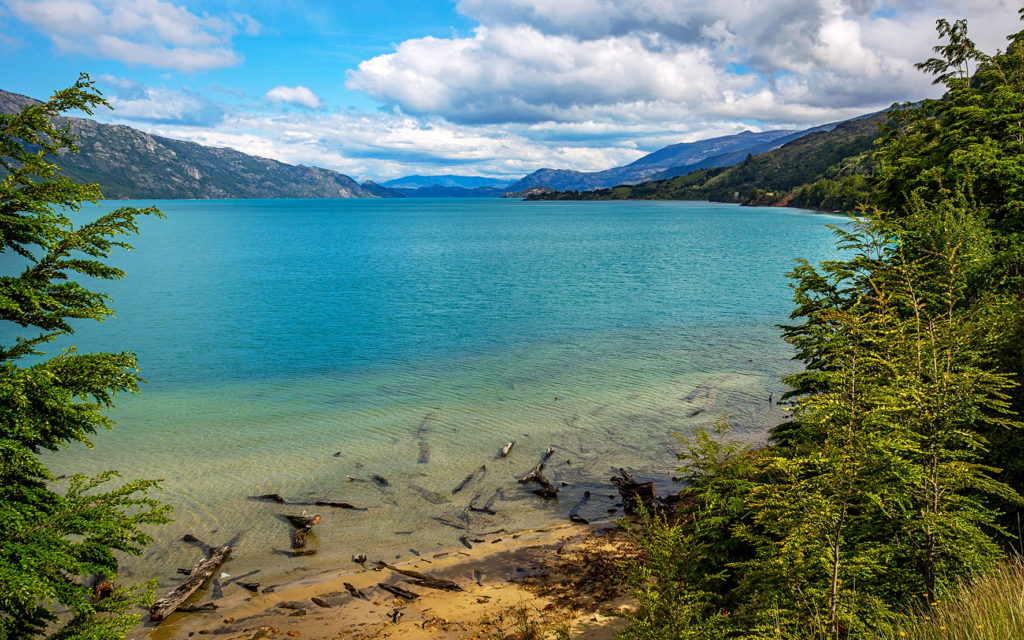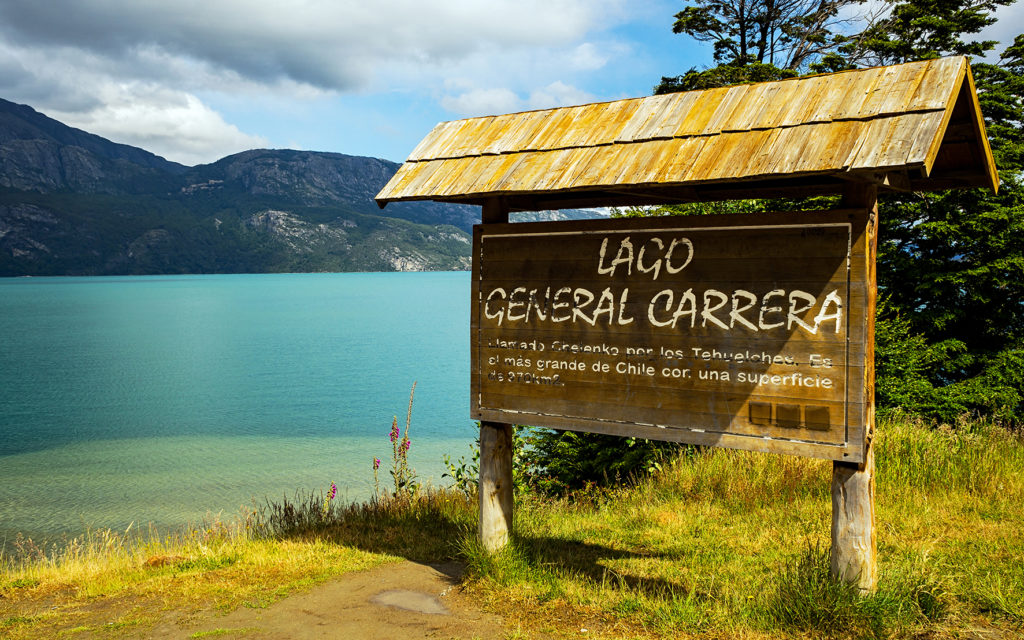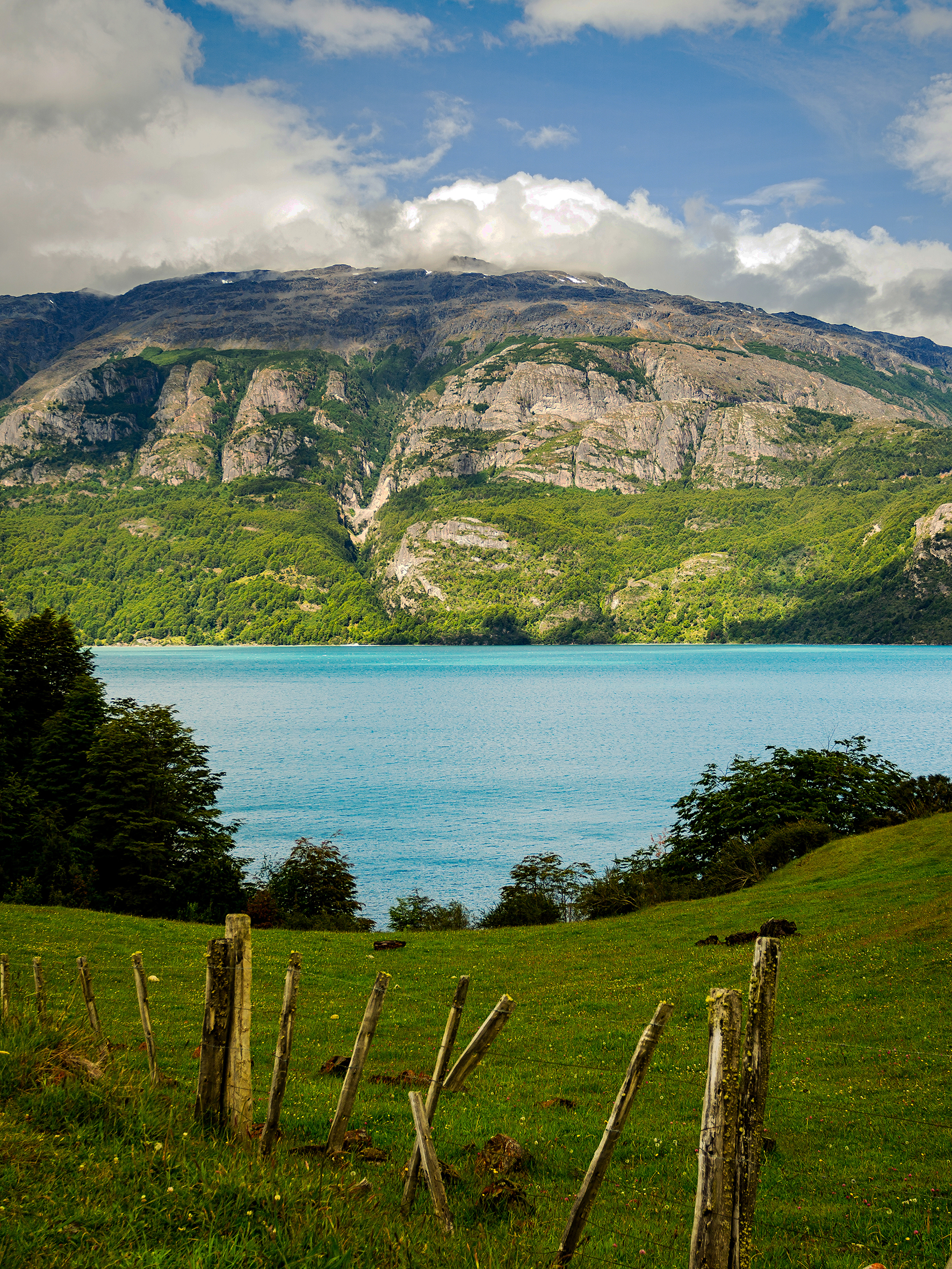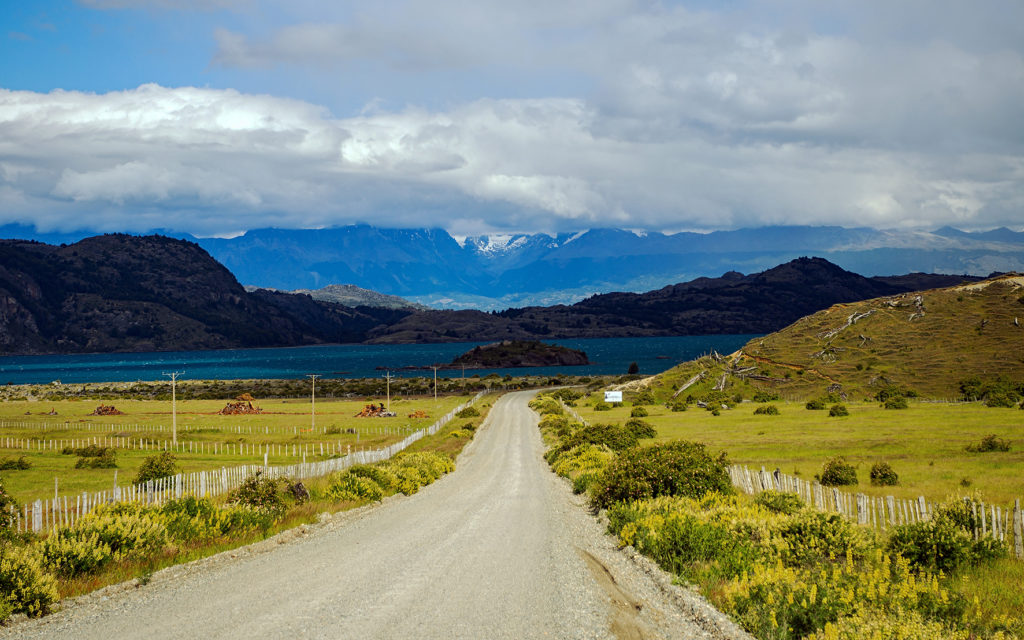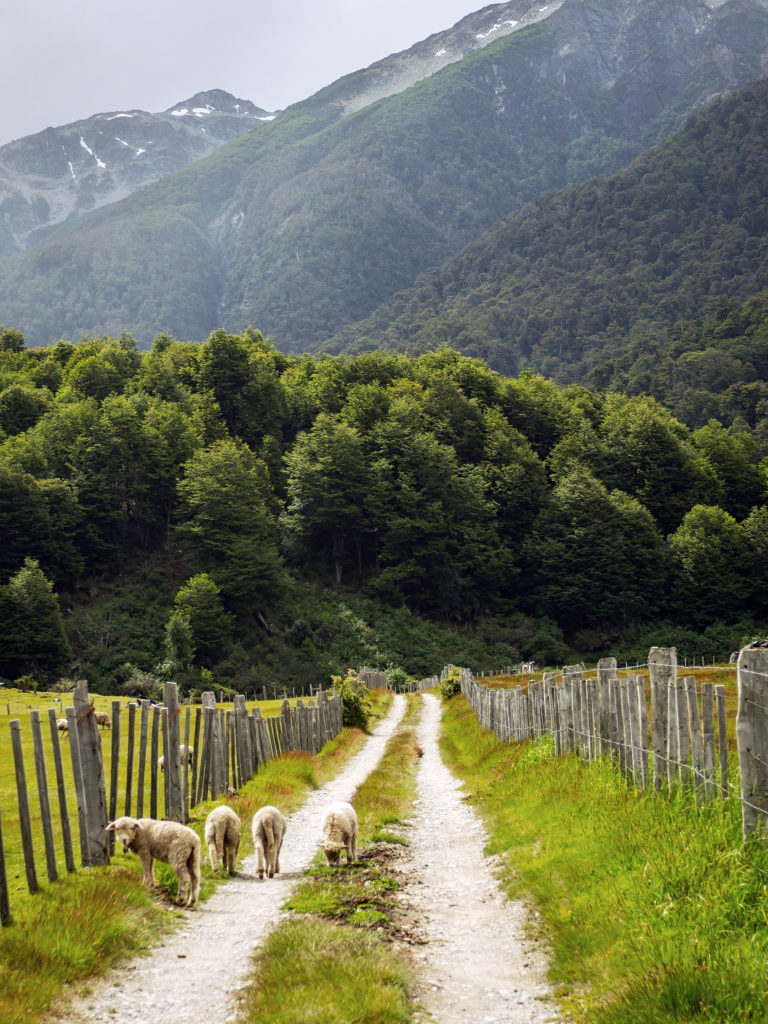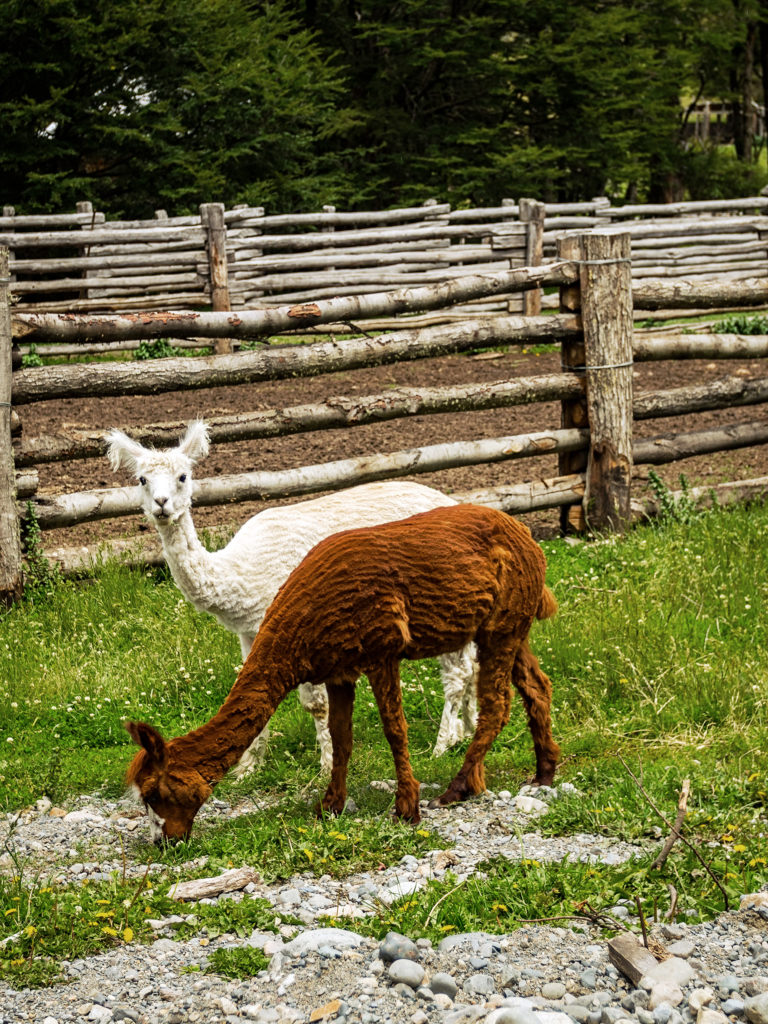The road from Camp Laguna Chinguay to Villa Cerro Castillo was incredibly scenic. We had left the cow pastures behind and were now crossing the much more mountainous terrain of the Cerro Castillo National Reserve. The town of Villa Cerro Castillo was on the other side of the park, at lower elevation, so coming down we got to fill our eyes with the view of the mountain range.
As we were driving down the hairpin bent road, I got to see, to the west in the distance, the spires of the “Castillo” summit which gives its name to the park (Castillo means Castle as the spires are somewhat reminiscent of a medieval castle).
The reserve offers spectacular hiking, especially if you are able to do the full trek, which is about 43km long. I was hoping to just do the day-hike to the Laguna (about 8 hours return), for a closer look at the spires. When we arrived at the visitor’s office in the small town however, they informed us that the weather was pretty bad up there, with snow and strong winds, and they advised against going up that day. As a side note, the guide book did not mention the day hike, I had only read about it on Rich and Ash’s blog. Everything else I read only mentioned the 4-day trek, but there is in fact a day hike.
Given the weather conditions and the prospect of climbing for 4 hours in the rain and snow, with likely no reward at the end, we decided to pass, and explore the area around instead. We didn’t have to go very far to find some really awesome viewpoints of the mountain range, which made up for not being able to go see it up-close.
After Cerro Castillo, the road was no longer paved. We hit some really rough sections along the way but eventually, the views of Lago Carrera distracted us from all the shaking – and the many stops we took to admire its stunning blue color gave us some breaks from the rough driving.
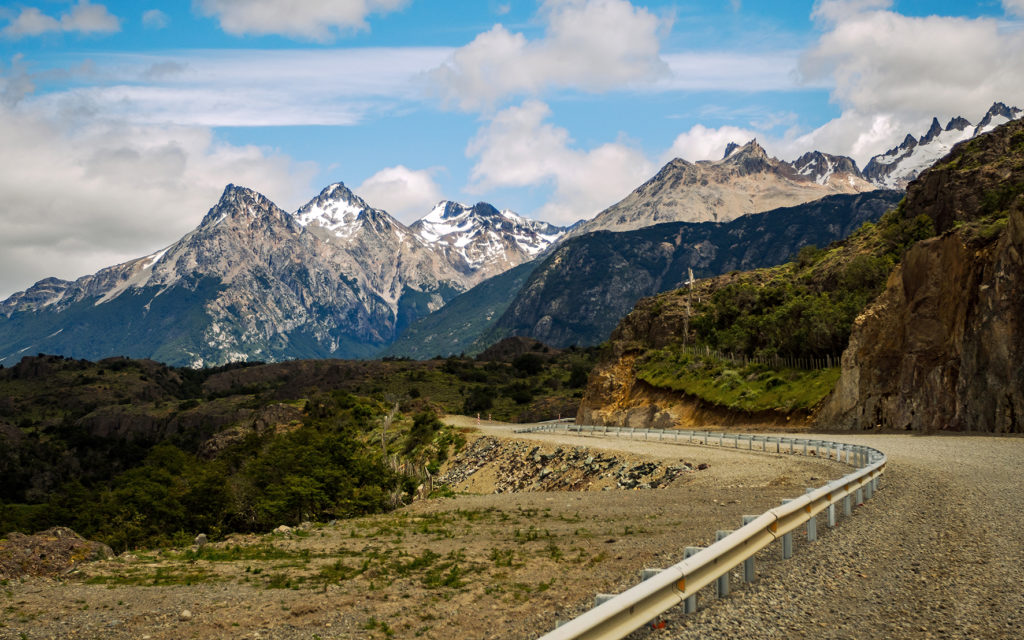
We arrived in Puerto Rio Tranquilo around 6pm. This little town definitely had a tourist hub feel to it. The main attraction there are the Marble Caves. Accessible only by boat (or kayak), these limestone caves display surreal shapes and colors, due to thousands of years of erosion from the lake’s glacier water. When the sun hits just right, the walls of the cave reflect a hundred different hues of blue from the lake water.
Booking a boat trip to see the caves isn’t very difficult. A dozens companies on the main street offer to take you. There’s actually no need to book ahead of time, they just try to get 6-8 people to fill the boat and then head out. It’s usually best to go in the early morning, before the wind starts to pick up and the waters become too rough.
We inquired about doing the tour in the morning from one of the tour operators, and they said to just come back at 8am, and pending good enough weather they would take us out.

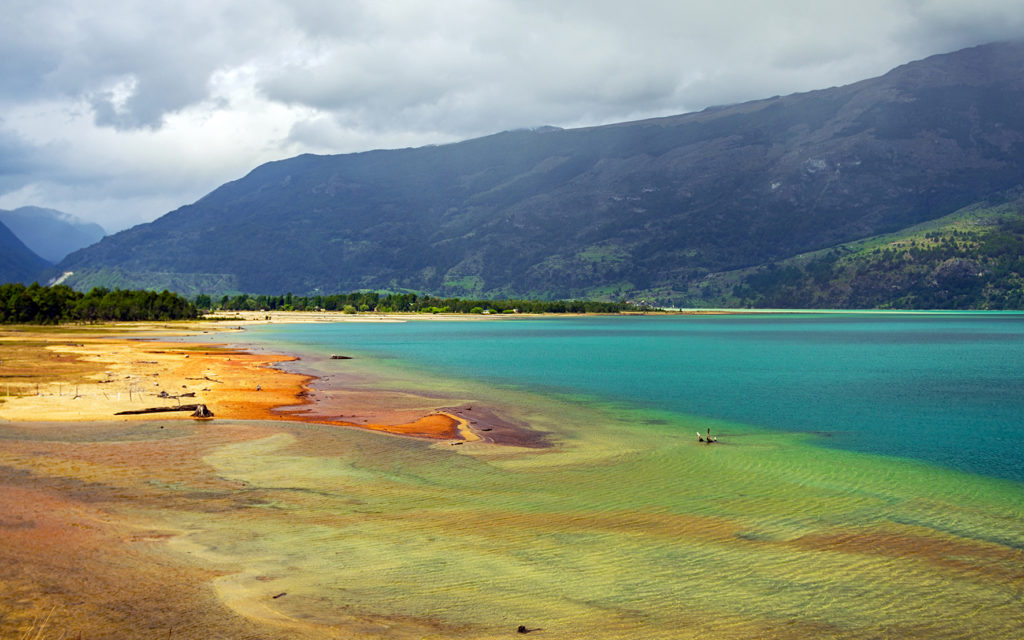
So we went on to look for a camping spot. We checked out the in-town places, but found that they were already crowded with other travelers and didn’t have much charm to them. So once again we turned to iOverlander to tell us where to go. About 15 km to the east was Nutria, a campground with really good reviews, so we decided to head out there.
The place was indeed perfect. Lost in the middle of nowhere, the campground was built around a little restaurant that offered warm beverages as well as sandwiches and breakfast.
On the left of the land were 4 or 5 sites, lined up side by side, each protected from the wind by a wooden wall and small overhang – it didn’t seem like much after the comfortable 4-wall shelters we had enjoyed the last few days but it still turned out to be remarkably effective against the strong wind and rain that hit us during the night. There were 4 or 5 individual bathrooms with toilet and hot shower (each campsite was assigned its own bathroom), and on the other side was the traditional quincho, with a big fireplace to warm it up.
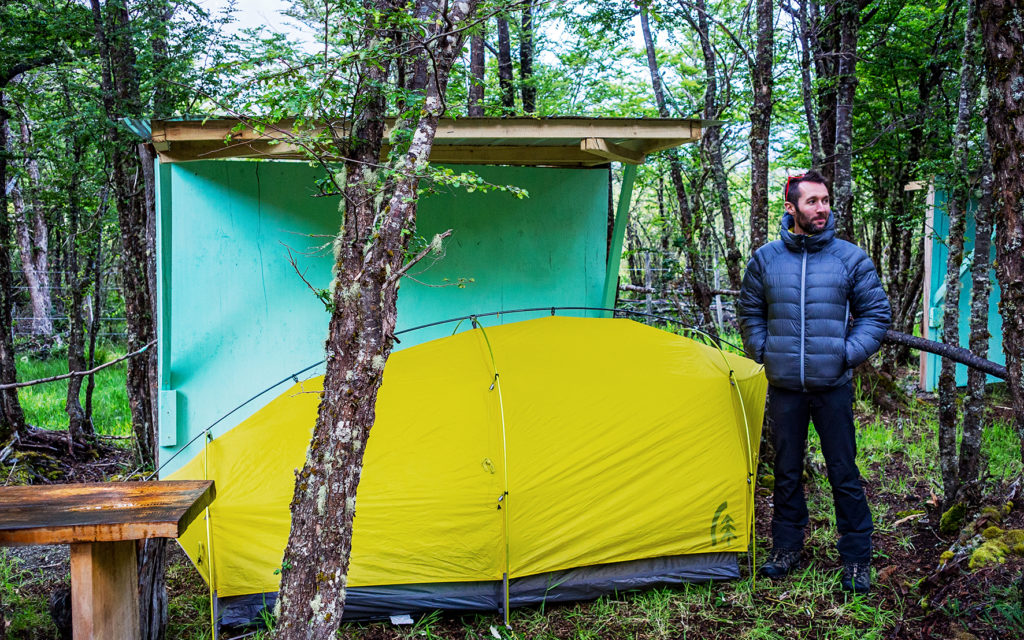
We first had coffee in the small restaurant, and got to meet Ricardo, the son of the couple who ran the campground. Ricardo had lived in Patagonia his whole life and had traveled through it extensively. He was a tour guide, taking people for glacier hikes and had also been to Torres del Paine a number of times. He gave us some really good advice for trekking in Torres, and also a little bit of a local’s perspective on how the Carretera had helped develop the area and create a connection between all the rural communities that otherwise lived secluded from the rest of the world.

We also met a couple from Belgium, with two kids (a 5 and a 3 year old). The man, who was in his early fifties, seemed to be a bit overwhelmed with his children, still it was inspiring to know they had been on the road with them for two months already. There was also another couple who was just coming back from trekking Torres del Paine, a Chilean man and a Swiss woman. After a few days of being mostly just the two of us, it was nice to spend the evening talking to other travellers and sharing their experience of the road.
